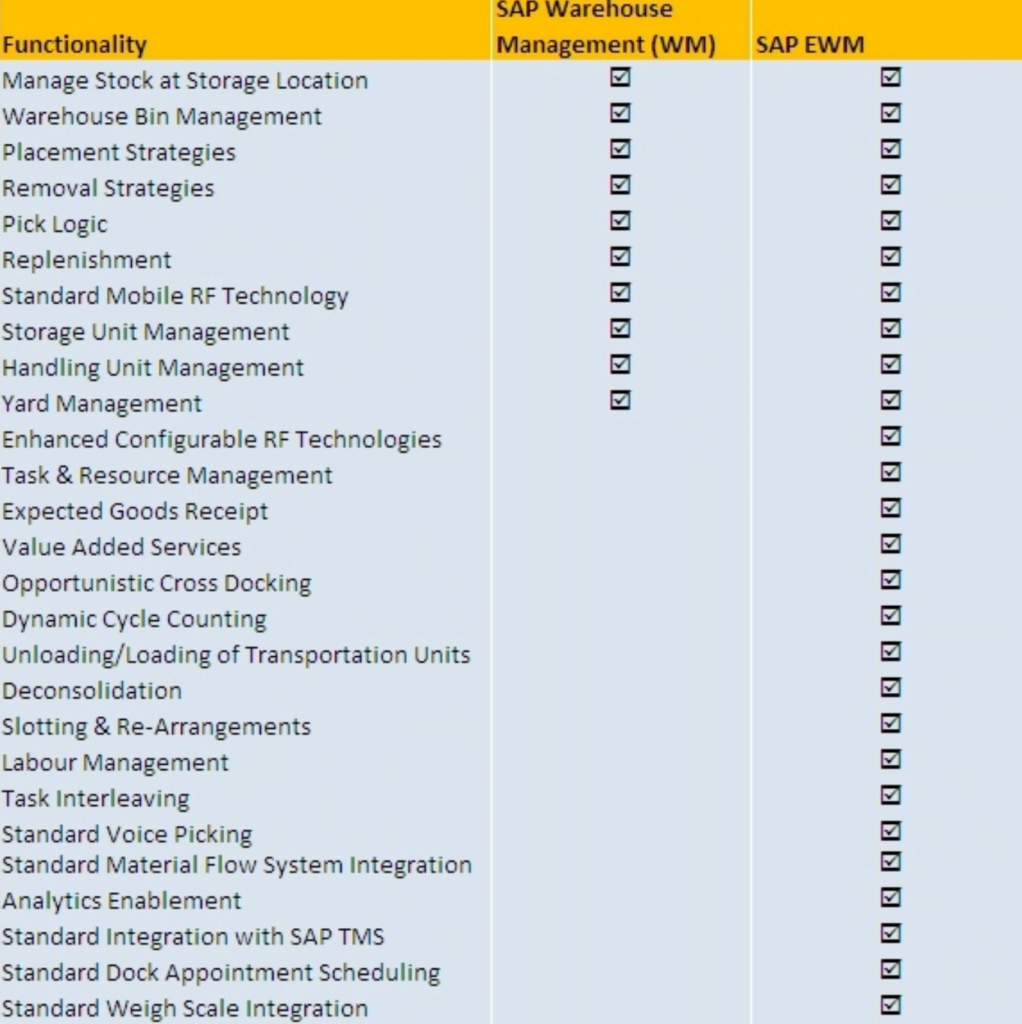SAP eWM
As a former SAP MM-WM consultant, if I had to talk about the SAP WM module, while I could solve the basic processes in the warehouse with SAP WM, when you consider all the features that a WMS software should have, SAP WM was quite insufficient to meet the needs of the companies. SAP WM did not offer you a solution for matters such as Yard Management and Task management. Below is a detailed comparison chart for eWM vs. WM.

Instead of developing new functionalities on SAP WM, SAP introduced the SAP eWM product with a new software strategy. First of all, eWM could be used either as a standalone product or as an add-on to SAP R3, which no one recommended to be installed as an add-on to ERP, and I have not personally heard of such a use case. It is technically possible to use eWM back in Embedded with S/4 HANA releases. Of course, this situation has advantages and disadvantages:
• I think the biggest advantage is that eWM and S/4 can make use of the same programs of functions. For example, it is very advantageous to be able to call a function prepared for eWM from within ERP. In addition to this feature, you can create hybrid reports by blending ERP and eWM data, or you can check the ERP data on the eWM screens and throw an error and vice versa. Although this does not seem like a huge advantage, it shortens the coding time in projects and prevents unnecessary integrations.
• As a disadvantage, some features of this product, which is designed as standalone, are not ready or not compatible in the embedded version. Again, eWM acts as if it is a different system and sends integration to S/4 like an external system. These integration errors must be tracked and solved frequently. Also embedded version may bring in HANA database or application sizing problems.



